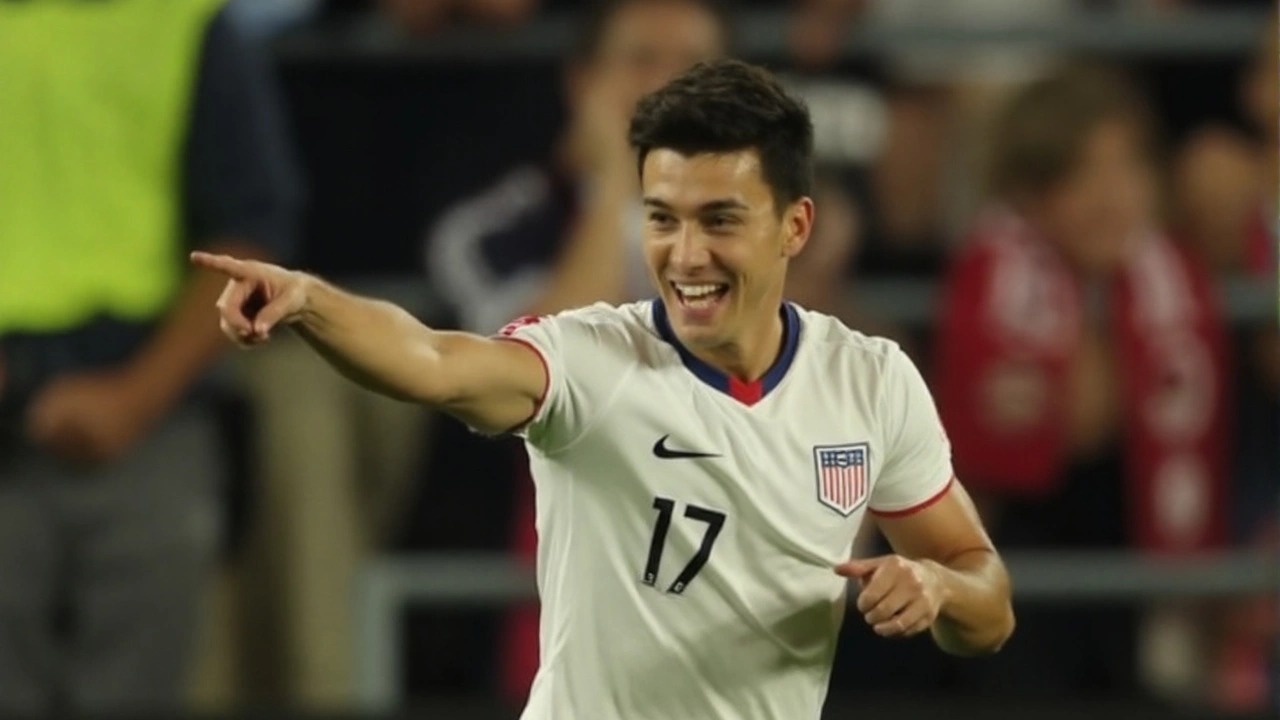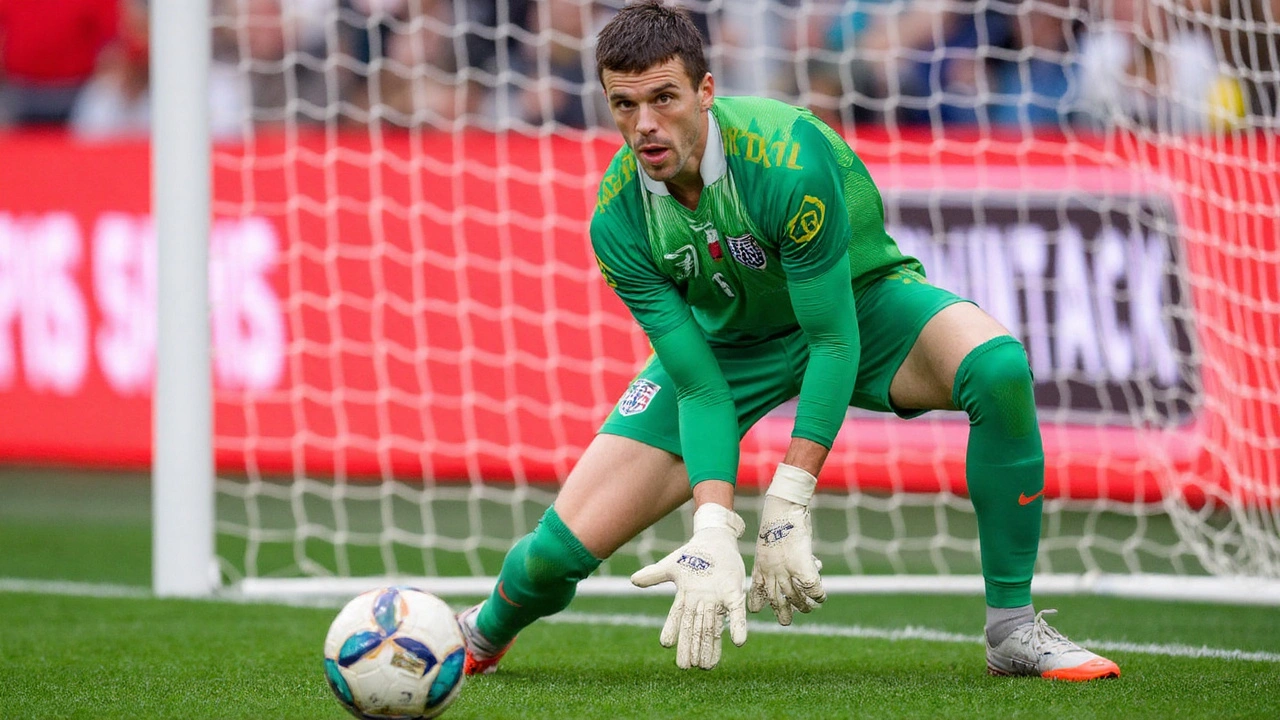USMNT 2-0 Japan: structure, edge, and a needed response
Three nights after a flat 2-0 defeat to South Korea, the USMNT answered with a controlled 2-0 win over Japan at Lower.com Field in Columbus, Ohio. It wasn’t flashy, but it was grown-up. Alejandro Zendejas struck on the half-hour, Folarin Balogun sealed it after the break, and Mauricio Pochettino’s revamped setup delivered the kind of balance this team had been missing.
Kickoff came at 7:30 p.m. ET, with coverage spread across TNT, Universo, HBO Max, and Peacock, plus radio on Westwood One and Fútbol de Primera. Pre-game began at 7 p.m. ET, and the federation pushed updates across X and Instagram via @USMNT, Facebook via U.S. Soccer, and The U.S. Soccer App. The friendly, presented by Allstate, closed the September window and doubled as a read on where Pochettino’s ideas stand with the 2026 World Cup creeping into focus.
Pochettino went with an unapologetically experimental 3-4-3. Matt Freese started in goal behind a back three of Chris Richards, captain Tim Ream, and Tristan Blackmon. Tyler Adams and Cristian Roldan formed a conservative double pivot, while Max Arfsten and Alex Freeman were asked to stretch the field as wing-backs. Up top, Christian Pulisic and Zendejas flanked Balogun. Zendejas earned his first national team start in over two years, a notable nod after a stop-start international run.
Japan, organized and relentless between the lines, was exactly the kind of opponent the U.S. needed after the South Korea setback. They press smart, break fast, and punish sloppy touches. In that context, the 3-4-3 made sense. It gave the U.S. an extra distributor in the first line, a cleaner exit when Japan closed the center, and clear vertical lanes for Pulisic and Zendejas to attack the spaces behind the full-backs.
The opener fit that script. The U.S. moved Japan side to side, recycled possession through the back three, then punched forward through midfield. The final action was simple—decisive run, clean finish from Zendejas in the 30th minute—but the buildup showed the plan: win the second ball, switch early, run at defenders before the block settles. For Zendejas, it was validation after a long wait for a big-stage chance.
Balogun’s goal on 64 minutes came from the kind of moment he thrives on: direct speed, a defender on his shoulder, and a quick release. It wasn’t a high-volume night of chances, yet the front line took the two they needed. That, more than anything, is a shift from the South Korea game, where the U.S. labored to turn possession into danger.
Defensively, the U.S. were calmer. Ream’s positioning allowed Richards to be aggressive in duels, while Blackmon handled recovery work on the right. Adams and Roldan kept the middle compact, pinching in around second balls and limiting the gaps that Japan exploit so well. The wing-backs stayed honest: adventurous when space opened, but rarely leaving the back three exposed in transition.
It’s also worth noting what Pochettino didn’t do. He resisted chasing the game with early changes or overloading the middle just to stack touches. The structure held, and the players inside it handled the dirty work—winning aerials, blocking lanes, managing tempo. With Josh Sargent, Tim Weah, and Sergiño Dest available on the bench, he had firepower in reserve without needing to redraw the blueprint on the fly.
Context matters. The last time these sides met, Japan pressed the U.S. into errors and won 2-0 in 2022. This time, the U.S. matched the energy, protected the ball, and took their chances. For a group that’s still settling under Pochettino, these are the steps that stick: better spacing, better rest defense, and forwards who punish mistakes. No one hangs banners for September friendlies, but habits form here.
Columbus has long been a comfort zone for the national team—a place where the crowd leans into the fight and the game feels a touch simpler. You could feel that in the speed of the U.S. counterattacks and the confidence in 50-50 challenges. The venue choice wasn’t a headline; it still mattered.

Takeaways, broadcast recap, and what’s next
There’s a lot to pick apart from one night, but a few things stand out for the road ahead:
- The shape worked. The 3-4-3 gave Adams and Roldan protection and freed Pulisic and Zendejas to attack space early.
- Zendejas changed the picture. His timing off the right, plus a composed finish, adds a different profile to the winger pool.
- Balogun needed that goal. Strikers live on rhythm. One confident finish shifts his next month.
- The back three had bite. Ream’s leadership settled things; Richards and Blackmon handled pressure without panicking.
- Game management improved. No rush, no chaos. The U.S. controlled when to speed up and when to breathe.
For fans who tracked the broadcast: TNT and Universo carried the TV call in English and Spanish, while HBO Max and Peacock streamed it for cord-cutters. Westwood One and Fútbol de Primera had radio, with social updates flowing from @USMNT and U.S. Soccer channels. Pre-game kicked off at 7 p.m. ET ahead of the 7:30 p.m. ET start.
Zooming out, the window now reads better: a poor night against South Korea, followed by a course correction here. That blend—learning through a loss, then applying it—counts for more than either result on its own. Pochettino’s staff will pore over the film for details, but you don’t need a telestrator to see the larger point: clear roles brought clearer decisions.
What does it mean for October? Two friendlies are on deck—Ecuador on October 10 and Australia on October 14. Expect competition to heat up in three spots. First, goalkeeper: Freese made a case for more minutes, and that race is open. Second, wing-back: Arfsten and Freeman brought legs, and depth there will matter in a long tournament. Third, the right wing: Zendejas just raised the bar for everyone around him.
There’s still a climb ahead. The U.S. need cleaner passing under pressure and more patterns to create cutbacks against low blocks. They also need to keep building relationships between the back three and the double pivot so counters don’t turn into emergency defending. But the bones of a sturdier team were visible. Against Japan, that was the difference between a nervous night and a two-goal win.
As World Cup co-hosts in 2026, the Americans don’t have the stress of qualifiers to sharpen them. These friendlies have to do that job. Against a disciplined, World Cup-bound opponent, they looked closer to the team they want to be. That’s a step worth keeping.
